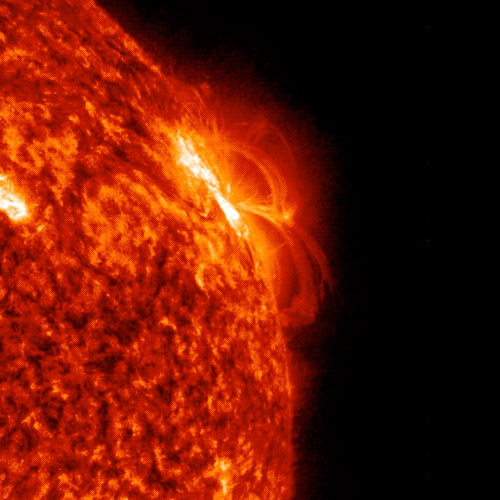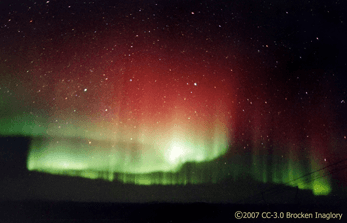
April 2023 - Vol. 27, No. 4
This Month's Night Sky - NOTE: The next paragraph describes the sky as it appears at 10 pm EST (11 pm EDT) near mid- month. The sky also looks this way at 11 pm EST (midnight EDT) during the beginning of the month and at 9 pm EST (10 pm EDT) by month's end.
As the days lengthen, the stars of the Winter Triangle fade into evening's dusk. The "Big Dipper" asterism (Ursa Major) is well placed for viewing this month since it is almost directly overhead. Follow the curve of its handle to Arcturus (Bootes) and continue on the curve to Spica (Virgo). Regulus (Leo) is on the ecliptic (the path traced by the planets and Moon), just W. of overhead. Looking further to the West, on the ecliptic, find the Gemini Twins, Castor and Pollux, and finally the Pleiades asterism of Taurus.
MERCURY in the evening sky will be the best northern apparition for the fleet-footed planet this year. VENUS is very prominent in the evening sky favoring the northern hemisphere gets brighter (mag. -4.2) and farther from the Sun this month, remaining in the sky longer. MARS has moved into Gemini and will be at 1.2 by month's end; now the disk of the red planet is a mere 6". JUPITER in conjunction with the Sun will not be seen this month. SATURN in the early morning twilight appears among the stars of Aquarius. URANUS sets in the evening sky, disappearing as it reaches conjunction with the Sun. NEPTUNE emerges from conjunction, rising in the early morning twilight.
Review how to determine Angular Measurement.
Calendar of Events
NOTE: For those observers not in the ET zone, convert the calendar times to your zone's time by subtracting one hour for CT, two for MT and three for PT. Don't forget to adjust for Daylight Savings Time when necessary by subtracting one hour from your planisphere's time. Dawn and dusk times must also be corrected. See your local newspaper, TV news, or cable TV's Weather Channel for sunrise and sunset times or check with the U.S. Naval observatory. Unfortunately some of these events may occur during daylight hours in your area.
| DATE | EVENT |
| 06 | This month's full moon is often called the "Pink Moon" due to the bloom of pink ground phlox, a common flower in North America. It is also called the Paschal full moon in honor of Easter that is held the first Sunday after the full moon that occurs on or after the spring equinox. In 2023, Easter occurs on the 9th of April. |
| 10 | Alpha Scorpii, Antares, 1.5 deg. S. of Moon. |
| 11 | Mercury at Greatest Elongation East (GEE) (19 deg.) Jupiter in conjunction with the Sun. |
| 16 |
Moon at perigee. Saturn 3.0 deg. N. of Moon. |
| 17 |
Venus at perihelion Neptune 2 deg. N. of Moon |
| 20 |
Hybrid Annular-Total Solar Eclipse Learn about this rare event in Astra's Eclipse Guide. |
| 21 |
Mercury 1.9 deg. N. of Moon. Uranus 1.7 deg. S. of Moon. Mercury stationary. |
| 22 | Moon 1.8 deg. S of M-45, the Pleiades star cluster. |
| 23 |
Lyrid Meteor peak. The shower is estimated to contain 20 meteors at peak, this year the Moon will be a new crescent and should not interfere with observing. Venus 1.3 deg. S. of Moon. |
| 26 |
Mars 3 deg. S. of Moon. Alpha Geminorum, Pollux, 1.5 deg. N. of Moon. |
| 28 | Moon at apogee. |
Lunar Almanac for April 2023
| Phases of the Moon | Phase and Date(s) | Best viewed before local midnight |
 |
New 20 |
Deep Space Objects |
 |
1st. Qtr 27 |
Planets & Moon |
 |
Full 06 |
Moon |
 |
Last Qtr 13 |
Deep Space & Planets |
Topic of the month: Aurora Alert!

March 12, 2023, at 11:36 p.m. EDT
Oh wow, the Sun is kicking off the solar cycle 25 run toward maximum with a giant coronal mass ejection or CME! On March 12, 2023, at 11:36 p.m. EDT, a giant CME was detected by a NASA spacecraft studying the Sun. NASA’s Solar Dynamics Observatory captured the image here on this page. Fortunately, the CME shot off from sunspots that had rotated to the portion of the Sun's disk that was facing away from the Earth. This CME was so powerful that it set off aurora on Earth, even though it was not aimed at our planet. Again on March 28, 2023, the Sun emitted a strong solar flare, peaking at 10:33 p.m. ET, this time sending a stream of particles rushing right for us. Solar events like these kick off auroras, caused by the interaction of charged particles (ions) from the Sun with the Earth's magnetic field and atmosphere. Auroras are light shows in the sky that depend on the type of gas molecules that are ionized. The most common color is green but red, blue, gold and white auroras are also possible. Sometimes an aurora can appear as a single column or beam of white light rising from the north or south horizon.
This is very interesting as the last solar cycle was a bit lackluster. What exactly does this mean? Our Sun has a cycle, shifting between periods of high and low activity. The cycle is measured by the number of sunspots on the surface of the Sun. The increases and decreases occur in a roughly 11-year cycle. The cycles are variable and some have been measured to take up to 14 years. Because of this uncertainty, the Sun's cycle is carefully observed.
Unlike lunar and planetary events, the actual date of solar maxima or minima can only be determined after the fact because it is based on sunspot counts. Astronomers also monitor the Sun's magnetic field to help determine the cycle. Predictions of solar cycles are determined by a panel that is managed by National Oceanic and Atmospheric Administration (NOAA) and the National Aeronautics and Space Administration (NASA). In December 2019, when the 13-month sunspot number fell to 1.8, the minimum was declared ending the Solar Cycle 24. According to the U.S. Weather Service:
“Solar Cycle 24 was average in length, at 11 years, and had the 4th-smallest intensity since regular record keeping began with Solar Cycle 1 in 1755. It was also the weakest cycle in 100 years. Solar maximum occurred in April 2014 with sunspots peaking at 114 for the solar cycle, well below average, which is 179.”
We are now in the Solar Cycle 25 and the next solar maximum is predicted to occur in July 2025.
During the solar cycle, the Sun's magnetic field reverses. This means that the magnetic poles of the Sun flip so that the north magnetic pole becomes the south magnetic pole, and vice versa. The solar cycle has an impact on the Earth's climate and space weather. When activity is high there are more sunspots and solar flares. Flares release large amounts of energy and particles into space. If Earth is in the path of the flare, charged particles hit the Earth's ionosphere. Massive eruptions from the Sun or CME's can disrupt satellite operations and radio communication, even damage power grids. Most importantly to the amateur astronomer, these eruptions can cause auroras, known as Aurora Borealis (northern lights) and Aurora Australis (southern lights.) Auroral activity is commonplace at the Earth's poles, but periods of high activity can cause aurora that extend well into the mid-latitudes.

March 2007 by Brocken Inaglory
Since the sun appears to be kicking off early in solar Cycle 25, amateurs and stargazers should keep there eye out for "aurora alerts". Luckily, there are several places to go to be prepared for the next aurora producing solar storm or event.
Spaceweather.com - This site will show what is currently happening and currently includes reports from the solar events named above.
Aurora 30 minute forecast - at this NOAA site you can find out what's up there and/or confirm if you've seen one.
Aurora Watch - University of Alberta
Aurora Alerts - from Soft Serve News, aurora alerts for southern hemisphere although there are some good leads on this web page.
Besides staying alert using web sites, there are also a few different aurora alert apps that can be used to keep up with the Sun and Earth. A quick internet search will identify many of them. We haven't tried any, but that may change if the level of solar activity stays high. So here's a few observing hints. Look at the sky around local midnight. If you are in the northern hemisphere, look to the north sky. If you are in the southern hemisphere, look south. And as typical for most astronomical events, a dark sky will help, not only with finding out if auroras are actually occurring in your area, but just to admire the beautiful colors and forms they can present.
--See You Under the Stars!
Astra for Astra's Almanac
This installment of "What's Up?" is ©2023 by Dawn Jenkins for Astra's Stargate. View Ron Leeseburg's Farewell Issue for information on where to find information such as is presented in this almanac.